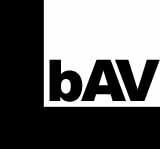Ende Juni hat Christian Rouette von der Finance/Asset Strategy Group der E.ON SE im Interview mit Leiter-bAV.de über eine Initiative europäischer Unternehmen gesprochen, die sich um eine Weiterentwicklung der Zinsfindung zur Diskontierung von Pensionslasten gemäß IAS 19 bemüht. Diese Initiative tritt mit einem Thesenpapier an die hier wichtigen Stakeholdern heran, namentlich an das IFRS IC, den IASB Staff, das DRSC und die ESMA.
Leiter-bAV.de dokumentiert im Folgenden dieses Papier im Original:
Setting the IAS 19 discount rate: Towards a common and sustainable practice
Update June 2013
Background and purpose of this paper
Under IAS 19, the discount rate to be used to value pension liabilities has to be determined by reference to the yield on “high quality corporate bonds”.
Following the developments of corporate bond markets and especially the “AA” sub-segment which was traditionally used as a reference for “high quality” since an answer provided by the SEC to a Q&A in 1993, a group of companies having an interest in improving the quality of pension financial reporting has been formed to share best practices on discount rate setting.
Our first paper back in January 2013, with a limited distribution and shared with IASB staff, IFRS IC members and ESMA, summarized the common views reached after several discussions and meetings organized with other stakeholders such as auditors, actuaries, and regulators.
Since January 2013 we:
• Met with IASB and ESMA to introduce our research and views
• Introduced an alternative approach to “AA”
• Expended our network, adding more organizations in different countries
• Made contact with other interested groups including the American Benefits Council
Executive summary
Based on this research and feedbacks, we believe that:
1) “High quality” corporate bonds shall not be limited to AA-rated corporate bonds as IAS 19 does not specify what grade of bonds should be designated as “high quality”
2) “High quality” is a relative measure. The notion of “high quality” is dynamic and may change over time
3) The universe of “high quality” corporate bonds should be large and stable to derive discounts rates consistently going forward. This can be achieved by redefining the universe of “high quality” corporate bonds being eligible to determine the discount rate according to IAS 19 in a way which incorporates a relative notion of high quality. This can be done as follows: all corporate bonds within the Investment grade universe are considered to be “quality bonds” and, within this universe, corporate bonds shall be considered “high quality” if their credit rating is at or above the average credit rating of all “quality bonds”. The average credit quality of the Investment Grade universe can be easily observed through well-established indexes (“corporate composite”) maintained by several index providers.
4) How to derive the discount rate with the eligible universe (eg to adjust for individual liability profiles like plan durations) shall remain an area of judgment for each reporting entity
1) “High quality” corporate bonds shall not be limited to AA-rated corporate bonds as IAS 19 does not specify what grade of bonds should be designated as high quality
We observe that:
• average corporate bond issuer ratings have shifted over the past 20 years especially in the Eurozone (i.e. from AAA/AA towards A)
• AAA genuine corporate bonds have nearly disappeared, while AA corporate bonds have become a rarity as they were most heavily affected by rating downgrades, usually to A.
• rating agencies have significantly changed their methodologies when rating companies by moving towards more demanding criteria including sector (eg financials) or country (eg Spain, Italy) aspects which are less reflecting the fundamental quality of single issuers and less comparable to ratings in the past. This led overall to a negative rating drift.
As a result, we believe that:
• the AA sub-segment which has been used in practice since 1993 based on an answer of the SEC staff to a Q&A, shall no longer serve as a single standard reference for high quality
• the robustness of the definition of “high quality” corporate bonds will be improved by using a relative and dynamic approach which will serve the purpose of ensuring stability of methods and results over time, and sustainability of the underlying basis, whereby restricting it to AA or above issuers would create erratic impacts in pension financial reporting beyond the natural volatility of bond markets
2) “High quality” is a relative measure. The notion of “high quality” is dynamic and may change over time
We believe “high quality” can no longer be determined by reference to a single grade like “AA”. Credit markets have changed, have become more volatile and rating distributions shifted. As a result we require a new universe that takes into account the more volatile credit markets, but still reflects a high credit quality above the average credit quality.
3) Introducing a Dynamic Method considering the movement of corporate bond markets will provide a stable basis going forward
We propose to introduce a relative definition of “high quality”. Under the Dynamic Method the universe of “high quality” corporate bonds is determined as follows:
• first, we determine the average credit quality of a broad investment grade corporate index which by nature selects quality corporate bonds, in each specific currency
• second, we only allow issuances with equal or higher credit quality than the average into the universe on which we base the discount rate
4) How to derive the discount rate inside the dynamic eligible universe shall remain an area of judgment for each company
In line with the principle-based vs. rule-based approach of the IFRS framework, we believe that the method of how to derive discount rates inside a dynamic eligible universe of bonds shall remain an area of judgment for each reporting entity.
As a result we believe:
• using a relative definition will allow to adjust for mitigating non systemic/idiosyncratic risks influencing the discount rate and will ensure rates are determined consistently over time
• the proposed method takes only into account those bonds that are above average credit quality
• the proposed method will reflect developments in the credit market ( i.e. up- and downgrades) automatically
• the proposed method will result in selecting a stable universe of “high quality” corporate bonds with an above average credit risk. As this average credit risk is measured by the overall investment grade universe, this average should by construction always remain above BBB+ even in stressed markets.
• with the appropriate disclosures the proposed method is transparent, objective and can be easily understood by all stakeholders and users of financial information





